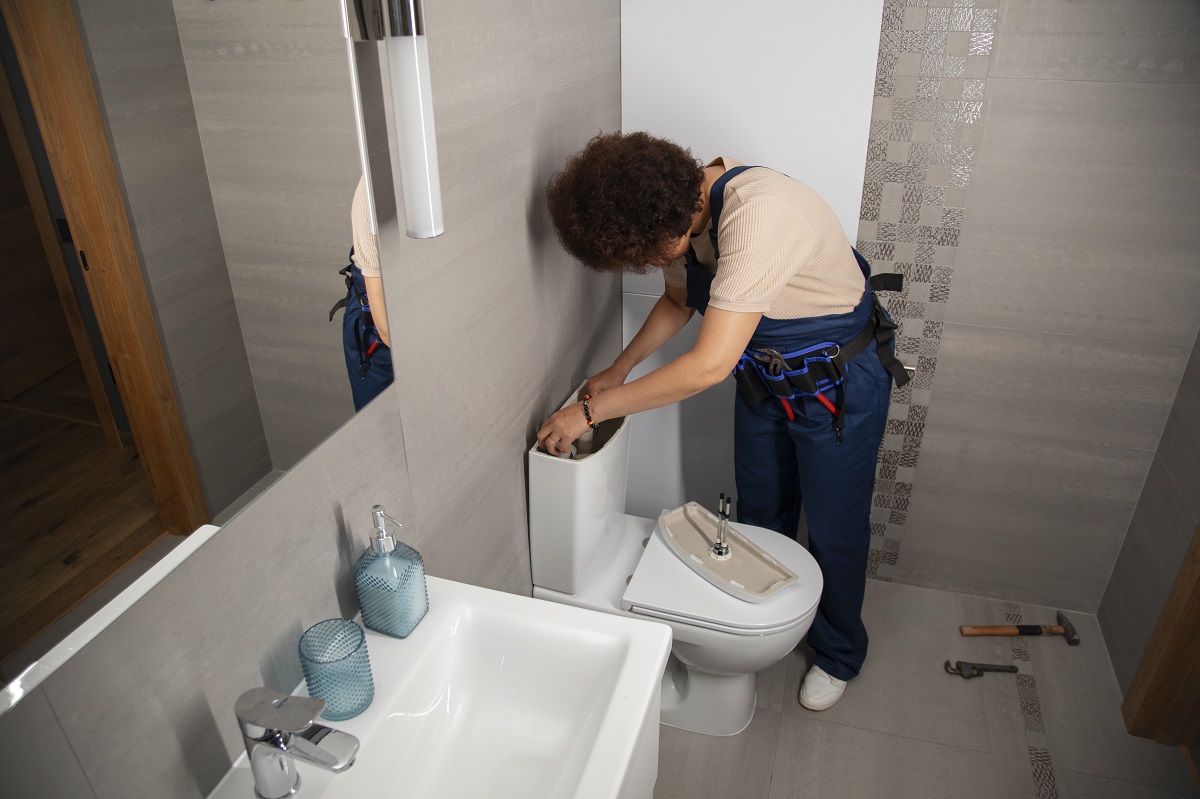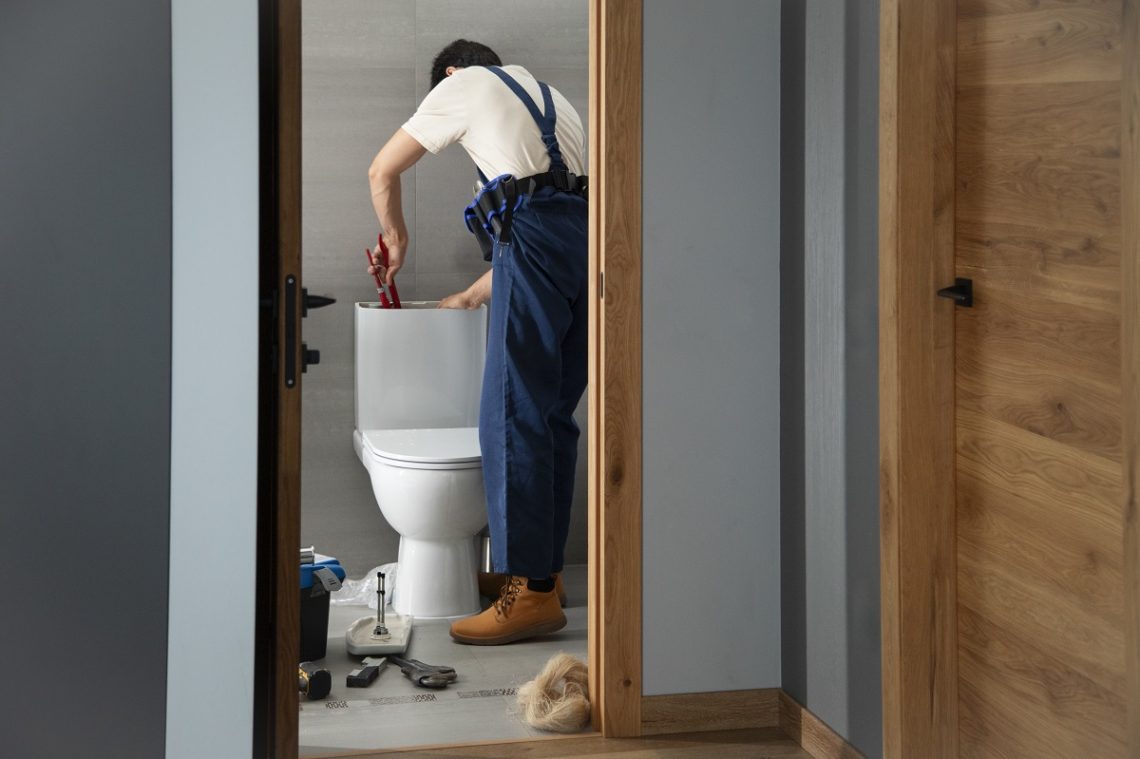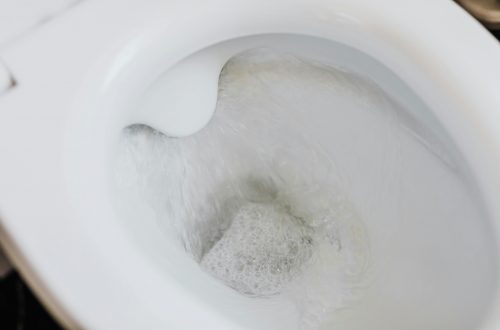
A running toilet can drive anyone crazy. That constant trickling sound? It’s more than just annoying—it’s wasteful and can spike your water bill fast. The good news? You don’t always need a plumber to fix it. With a little know-how and a few simple tools, you can stop your toilet from running and get back to peace and quiet.
This guide breaks down quick DIY fixes that work, whether your toilet has a faulty flapper, an overfilled tank, or a misaligned float.
Why Is Your Toilet Still Running?
If your toilet keeps running, you’re likely dealing with one of three problems:
- Water is leaking from the tank into the bowl
- The tank is refilling too often or too much
- Something inside isn’t sealing properly
The goal is to find the culprit quickly and fix it without disassembling your entire toilet. Let’s start with the most common causes.
Step 1: Open the Tank and Take a Look

Remove the lid and gently place it somewhere safe (it’s fragile ceramic). Now observe what’s happening inside the tank:
- Is the water overflowing into the overflow tube?
- Is the flapper not sealing the hole at the bottom?
- Is the fill valve still running, even when the tank is full?
Once you spot the behavior, you’re halfway to the solution.
Fix #1: Adjust the Float Level
Problem: The tank water level is too high, so it keeps draining into the overflow tube and triggering a refill.
Fix: Adjust the float to lower the water level.
How to do it:
- For ball floats (attached to a rod): Bend the rod downward slightly so the ball sits lower.
- For cup-style floats (sliding up/down the fill valve): Look for a clip or screw and slide the float down.
Target water level: About 1 inch below the top of the overflow tube.
Fix #2: Clean or Replace the Flapper
Problem: The flapper (rubber seal at the bottom of the tank) isn’t sealing properly, so water keeps leaking into the bowl.
Fix: Clean it or swap it out.
What to do:
- Turn off the water supply valve under the tank.
- Flush the toilet to empty the tank.
- Inspect the flapper. Is it warped? Covered in mineral buildup?
- Clean it with an old toothbrush, or replace it entirely (they’re cheap and found in any hardware store).
- Make sure the chain is the right length—not too tight, not too slack.
Tip: If the flapper looks fine but won’t seal, check the seat it rests on—grit or limescale buildup can also cause leaks.
Fix #3: Adjust or Replace the Fill Valve
Problem: The fill valve keeps running or doesn’t shut off properly.
Fix: Adjust it—or if that doesn’t work, replace it.
How to adjust:
- Most modern fill valves have a screw near the top that changes when the valve shuts off.
- Turn it gently to adjust the shutoff point so it stops before water hits the overflow tube.
If adjusting doesn’t help, replacing a fill valve is straightforward:
- Shut off water and flush to empty the tank.
- Unscrew the valve from underneath the tank.
- Install the new one per instructions (usually a simple locknut and washer).
- Reconnect the water supply, turn it on, and test.
Fix #4: Shorten or Reposition the Refill Tube
Problem: The refill tube is siphoning water into the overflow pipe non-stop.
Fix: Shorten it or clip it higher.
The refill tube is the small, flexible hose that refills the bowl after a flush. If it’s pushed too far down the overflow pipe, it can create a siphon effect.
Quick fix:
- Pull the tube out so it sits just above the top of the overflow pipe.
- Clip it to the overflow using a small clip or zip tie.
Fix #5: Tighten or Replace the Flush Handle Assembly
Problem: The flush handle sticks or doesn’t reset fully, keeping the flapper open.
Fix: Tighten the handle nut inside the tank or replace the handle.
Steps:
- Lift the tank lid.
- Check if the handle feels loose or if the chain gets caught.
- Tighten the nut counterclockwise (it’s usually reverse-threaded).
- If the handle is corroded or broken, replace it (again—very inexpensive).
Bonus: Use Dye to Spot Hidden Leaks
Still not sure where the leak is? Here’s a trick:
- Add a few drops of food coloring (or a dye tablet) into the tank.
- Wait 15–30 minutes without flushing.
- If the color shows up in the bowl, you’ve got a leak—likely the flapper.
How to Stop Toilet from Running With Basic Tools
You won’t need much. Keep these basic tools on hand:
- Adjustable wrench or pliers
- Old towel or sponge (for spills)
- Rubber gloves (if desired)
- Toilet repair kit (optional but useful)
- Food coloring or dye tablets for testing
When Should You Replace Instead of Repair?

If you’ve tried several of these fixes and your toilet still runs—or you find cracks in the tank, brittle plastic parts, or severe corrosion—it may be time to replace it. Newer toilets are not only more efficient but also easier to maintain.
Consider replacement if:
- The toilet is over 20 years old.
- It flushes poorly, even when not running.
- Several parts need replacing at once.
You don’t always need to make that call on your own. A plumbing consultant can inspect your setup and let you know if a repair will hold up or if replacement is the smarter long-term move.
Final Thoughts: Silence That Toilet for Good
Fixing a running toilet is one of those DIY wins that pays off immediately. You’ll save money, conserve water, and eliminate that irritating sound echoing through your bathroom. Most of these fixes cost under $20 and take less than 30 minutes—even if you’ve never opened a tank before.
So next time your toilet keeps running, skip the plumber (at least at first) and try these quick, effective solutions. Your water bill—and your sanity—will thank you.



